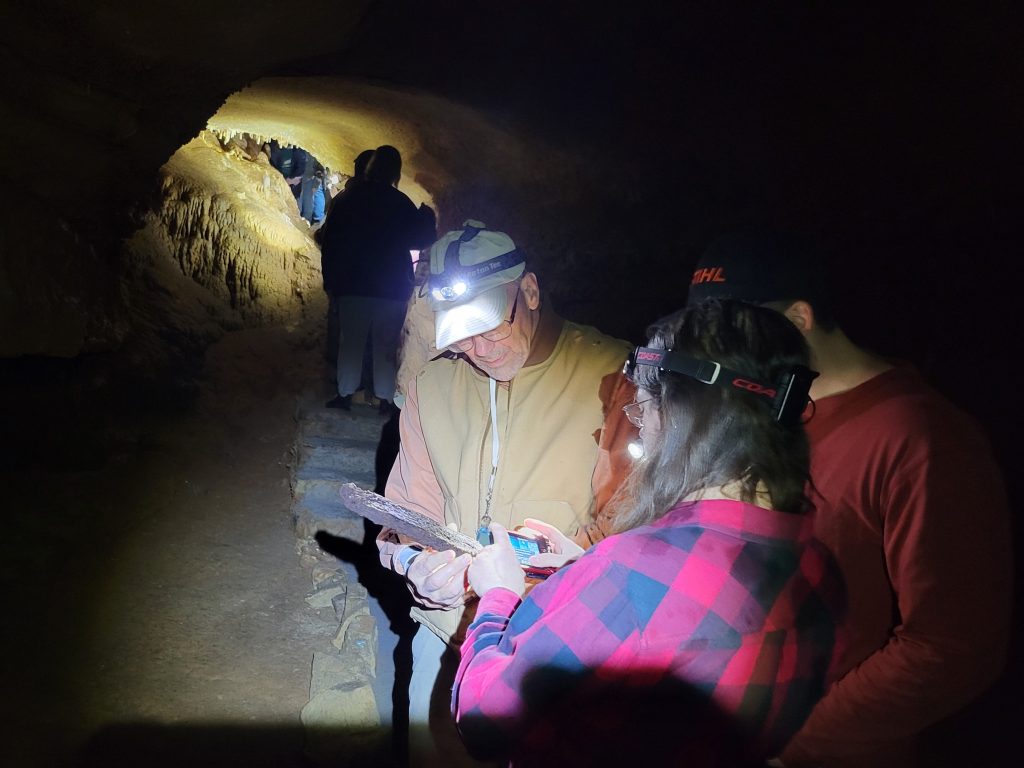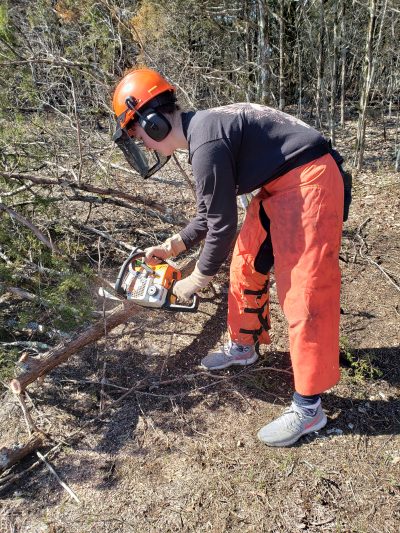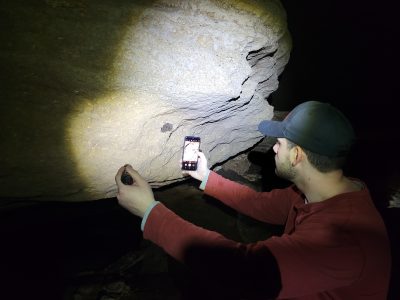
Dr. David Ashley and biology students look for wildlife in Tumbling Creek Cave.
March 22, 2023–Wildlife conservation and management students at Missouri Western State University started their spring break with a hands-on learning experience: restoring a unique and threatened habitat in southern Missouri.
The 13 students and four faculty members traveled to the Ozark Underground Laboratory (OUL) near Protem, Missouri, March 17-19. They worked to clear invasive cedar trees and select hardwoods from the glade at OUL.
“Students gained practical applied learning experience in habitat management challenges and skills,” said Dr. Cary Chevalier, professor of biology and faculty adviser of the Student Chapter of The Wildlife Society. “We used loppers, bow saws and chainsaws to manage the glade habitat. The weather was very cooperative, so we made excellent progress.”
 Missouri glades are unique microhabitats found on Ozark hilltops and south and west facing slopes. Shallow soil layers and exposed bedrock produce a mostly treeless arid environment very similar to deserts of Arizona and Texas. Missouri glades are characterized by a biodiversity that includes cacti, scorpions, tarantulas, collared lizards and road runners as well as other more common species.
Missouri glades are unique microhabitats found on Ozark hilltops and south and west facing slopes. Shallow soil layers and exposed bedrock produce a mostly treeless arid environment very similar to deserts of Arizona and Texas. Missouri glades are characterized by a biodiversity that includes cacti, scorpions, tarantulas, collared lizards and road runners as well as other more common species.
Many Missouri glades are being degraded by human activities and they all face the risk of being overgrown by invasive cedars. Successful glade management usually involves felling and burning the invasive woody plants and periodically using prescribed burns to clear additional invasive woody plants and forbs. This is the third year Missouri Western wildlife students have done glade restoration work at the OUL.
“Cathy and I very much appreciate the glade restoration work done by the Missouri Western team,” said Dr. Tom Aley, director and owner of OUL with his wife. “It was successful both in helping the land and in providing a unique learning experience for students.”
Students also toured Tumbling Creek Cave on the property, led by Dr. Dave Ashley, Missouri Western biology professor emeritus. Tumbling Creek Cave claims the most diverse cave wildlife among caves west of the Mississippi River, and one invertebrate found first in Tumbling Creek Cave in the early 2000s was named in honor of Dr. Ashley–Brackenridgia ashleyi.

Photographing a bat in Tumbling Creek Cave
Drs. Ashley and Aley led the students in discussions on the relationship between surface habitat and watershed and the cave ecosystem in karst landscapes like those in southern Missouri.
In addition to Dr. Chevalier, faculty members making the trip were Drs. Carissa Ganong, Mark Mills and Aracely Newton.
The wildlife conservation and management degree program at Missouri Western is committed to providing students with hands-on learning opportunities to prepare students for career opportunities and graduate schools. It is one of only two programs in the state of Missouri to offer all required courses for certification as a wildlife biologist by The Wildlife Society. The MWSU Student Chapter of The Wildlife Society is regularly recognized as Regional and International Student Chapter of the Year.
Missouri Western State University is a student-centered learning community preparing individuals for lives of excellence through applied learning. Missouri Western is located in St. Joseph, Mo., and is committed to the educational, economic, cultural and social development of the region it serves. Visit missouriwestern.edu.
